Realme 12 Pro+ review – Periscope zoom camera on a mid-range phone
Comparison with possible competitors
Rating | Version | Date | Model | Weight | Drive | Size | Resolution | Price |
|---|---|---|---|---|---|---|---|---|
| 77.1 % | v8 | 07 / 2024 | Realme 12 Pro+ SD 7s Gen 2, Adreno 710 | 196 g | 256 GB UFS 3.1 Flash | 6.70" | 2412x1080 | |
| 84.3 % v7 (old) | v7 (old) | 09 / 2023 | Realme 11 Pro+ Dimensity 7050, Mali-G68 MP4 | 189 g | 512 GB UFS 3.1 Flash | 6.70" | 2412x1080 | |
| 85.9 % v7 (old) | v7 (old) | 05 / 2024 | Samsung Galaxy A35 5G Exynos 1380, Mali-G68 MP5 | 209 g | 128 GB UFS 2.2 Flash | 6.60" | 2340x1080 | |
| 85.8 % v7 (old) | v7 (old) | 01 / 2024 | Xiaomi Redmi Note 13 Pro 5G SD 7s Gen 2, Adreno 710 | 187 g | 256 GB UFS 2.2 Flash | 6.67" | 2712x1220 | |
| 83.9 % v7 (old) | v7 (old) | 02 / 2024 | Honor Magic6 Lite SD 6 Gen 1, Adreno 710 | 185 g | 256 GB UFS 3.1 Flash | 6.78" | 2652x1200 |
Note: We have recently updated our rating system and the results of version 8 are not comparable with the results of version 7. More information is available here .
Case and specifications – Slim and premium
The realme 12 Pro+ boasts a display with a protective glass that curves around the sides. There is only a thin bezel around the screen. Since the back panel also features curved edges, the phone ends up having a very slim profile and fits very comfortably in the hand.
The back is covered in artificial leather and features a decorative stripe down the middle, reminiscent of the design on the realme 11 Pro+, though the line has a metallic sheen this time. In Europe, the realme 12 Pro+ comes in two colourways: Submarine Blue (deep blue with gold accents) and Navigator Beige. Additionally, there is an Explorer Red colour scheme for the international market. The circular camera module matches the phone's colours and reflects light beautifully with a concentric pattern. The design was created in collaboration with luxury watch designer Ollivier Savéo. However, one drawback is that the camera protrudes a lot from the body.
The chassis is very sturdy and doesn’t flex even when a huge amount of force is applied. It also produces minimal creaking noises. Despite not feeling overly heavy in the hand, the realme 12 Pro+ still weighs a few grams more than its competitors in the same price bracket. The device has an IP65 rating, meaning it isn’t protected from immersion in water and you probably shouldn't go swimming with it.
The phone is available in two configurations: €499 (US$535) will get you 256 GB of storage and 8 GB of RAM, whilst the version with 512 GB of storage and 12 GB of RAM will set you back €549 (US$589). That said, prices have already fallen significantly, and it's now available for considerably less than €400 (US$430).
Unfortunately, the realme 12 Pro+ lacks a microSD slot. But it includes an NFC reader that allows you to use things like contactless payment services.
Connectivity, software and operation – Speedy Wi-Fi
The device is equipped with WiFi 6 and delivered impressive speeds in our Wi-Fi tests performed with our Asus ROG Rapture AXE11000 reference router, achieving receive rates of up to 1,600 Mbits/s. Though its transmit rates were only around half as high. Overall, the realme 12 Pro+ offers extremely fast Internet connectivity and can make good use of a Gigabit connection.
Furthermore, the phone supports a wide range of 5G and 4G frequencies for mobile Internet access, allowing you to use the phone in most countries when you are travelling. During our review, we tested the phone’s reception and signal quality numerous times at random on the German Vodafone network and found that the realme 12 Pro+ didn't quite match high-end phones in terms of signal strength. Nevertheless, the device delivered a stable signal in most situations.
The operating system is based on Android 14 and has a layer of realme UI 5.0 on top. At the time of this review, the security patches were dated 5 April 2024 and thus already three months old. Security updates are actually supposed to be rolled out every two months for a minimum of three years. Realme also typically offers two new Android versions by default, but it seem like the company doesn't want to fully committed to this.
The 120Hz screen is highly reliable and remains sensitive to inputs at the edges. The system responds rapidly to inputs with hardly any noticeable delays. The phone is also able to quite consistently detect accidental touches on the sides of the curved display and ignore them accordingly.
The fingerprint sensor is hidden underneath the display glass. Its placement is actually slightly too low for our taste, but whilst adding a fingerprint, we were able to train the sensor to recognise our finger even when it is placed a little higher up. This means people with various hand sizes should be able to use the fingerprint sensor.
| Networking | |
| Realme 12 Pro+ | |
| iperf3 transmit AXE11000 | |
| iperf3 receive AXE11000 | |
| Realme 11 Pro+ | |
| iperf3 transmit AXE11000 | |
| iperf3 receive AXE11000 | |
| Samsung Galaxy A35 5G | |
| iperf3 transmit AXE11000 | |
| iperf3 receive AXE11000 | |
| Xiaomi Redmi Note 13 Pro 5G | |
| iperf3 transmit AXE11000 | |
| iperf3 receive AXE11000 | |
| Honor Magic6 Lite | |
| iperf3 transmit AXE11000 | |
| iperf3 receive AXE11000 | |
Cameras – Persicope zoom camera on board
Realme has a special treat in store when it comes to the cameras: this €500 smartphone is fitted with a 64MP periscope camera capable of up to 6x optical zoom. The phone even has a maximum range of 120x, making it potentially very useful as makeshift binoculars, though the image quality naturally won't be very impressive at that zoom level.
The main camera boasts a 50MP Sony sensor, but it typically captures photos at 12.5MP due to pixel binning. Image quality is exceptional in both object and landscape photography, delivering photos with good sharpness and a great deal of detail. In low-light conditions, the resulting image is evenly brightened overall and has excellent sharpness.
The realme 12 Pro+ supports video recording at up to 4K and 30 fps. Auto exposure and autofocus react promptly to changes in a scene, and video quality is good overall.
Additionally, there is a wide-angle camera that can shoot 8MP photos with good image quality. However, fine details may not be distinguishable in photos taken with this lens.
On the front is a 32MP selfie camera. Similar to the main shooter, it defaults to producing images with only 1/4 of the sensor's resolution for improved light sensitivity. The resulting selfies appear slightly grainy and only offer minimal detail in dark areas. Nonetheless, the image quality is decent as a whole.
Image comparison
Choose a scene and navigate within the first image. One click changes the position on touchscreens. One click on the zoomed-in image opens the original in a new window. The first image shows the scaled photograph of the test device.
Main camera: plantMain camera: surroundingsMain camera: low lightUltrawide camera

Display – Bright enough for outdoor use
With an extended Full HD resolution, the display on the realme 12 Pro+ is comparable to what we've seen on devices of this class, even though some competitors offer slightly higher pixel counts. That said, a higher resolution isn’t really necessary since images already look sharp on the 6.7-inch display.
Owing to its AMOLED panel, the display boasts vibrant colour reproduction and, in theory, infinitely high contrast ratio. This is because individual pixels can be completely turned off, resulting in true black.
The realme 12 Pro+ has nearly identical peak brightness to its predecessor, which suggests that realme likely uses the same panel for the two phones. Based on our measurement performed using a spectrophotometer, the display also has great colour accuracy, with colour deviations barely perceptible to the human eye.
However, we detected significant screen flicker at low brightness. Consequently, people who are sensitive to PWM flicker should try out the display first before buying the device. The amplitude (i.e. the brightness change in each oscillation) is only 40%, which could reduce the severity of these issues by making the flicker less noticeable.
| |||||||||||||||||||||||||
Brightness Distribution: 95 %
Center on Battery: 778 cd/m²
Contrast: ∞:1 (Black: 0 cd/m²)
ΔE ColorChecker Calman: 1.63 | ∀{0.5-29.43 Ø4.78}
ΔE Greyscale Calman: 1.7 | ∀{0.09-98 Ø5}
98.8% sRGB (Calman 2D)
Gamma: 2.221
CCT: 6576 K
| Realme 12 Pro+ AMOLED, 2412x1080, 6.7" | Realme 11 Pro+ AMOLED, 2412x1080, 6.7" | Samsung Galaxy A35 5G Super AMOLED, 2340x1080, 6.6" | Xiaomi Redmi Note 13 Pro 5G AMOLED, 2712x1220, 6.7" | Honor Magic6 Lite AMOLED, 2652x1200, 6.8" | |
|---|---|---|---|---|---|
| Response Times | 1% | -42% | 14% | -2% | |
| Response Time Grey 50% / Grey 80% * (ms) | 2.1 ? | 1.6 ? 24% | 3 ? -43% | 1.49 ? 29% | 1.89 ? 10% |
| Response Time Black / White * (ms) | 1.3 ? | 1.6 ? -23% | 1.831 ? -41% | 1.33 ? -2% | 1.48 ? -14% |
| PWM Frequency (Hz) | 233.2 | 439 | 240 | 713.5 | 528 |
| PWM Amplitude * (%) | 40 | ||||
| Screen | -23% | -0% | 8% | 32% | |
| Brightness middle (cd/m²) | 778 | 779 0% | 904 16% | 1205 55% | 1003 29% |
| Brightness (cd/m²) | 783 | 756 -3% | 912 16% | 1177 50% | 1007 29% |
| Brightness Distribution (%) | 95 | 94 -1% | 97 2% | 90 -5% | 96 1% |
| Black Level * (cd/m²) | |||||
| Colorchecker dE 2000 * | 1.63 | 1.9 -17% | 2.1 -29% | 1.51 7% | 0.8 51% |
| Colorchecker dE 2000 max. * | 3.57 | 4.38 -23% | 2.8 22% | 4.07 -14% | 2.4 33% |
| Greyscale dE 2000 * | 1.7 | 3.3 -94% | 2.2 -29% | 2.5 -47% | 0.9 47% |
| Gamma | 2.221 99% | 2.269 97% | 2.1 105% | 2.175 101% | 2.18 101% |
| CCT | 6576 99% | 6558 99% | 6478 100% | 6407 101% | 6406 101% |
| Total Average (Program / Settings) | -11% /
-17% | -21% /
-11% | 11% /
9% | 15% /
23% |
* ... smaller is better
Display Response Times
| ↔ Response Time Black to White | ||
|---|---|---|
| 1.3 ms ... rise ↗ and fall ↘ combined | ↗ 0.6 ms rise | |
| ↘ 0.7 ms fall | ||
| The screen shows very fast response rates in our tests and should be very well suited for fast-paced gaming. In comparison, all tested devices range from 0.1 (minimum) to 240 (maximum) ms. » 6 % of all devices are better. This means that the measured response time is better than the average of all tested devices (20.2 ms). | ||
| ↔ Response Time 50% Grey to 80% Grey | ||
| 2.1 ms ... rise ↗ and fall ↘ combined | ↗ 1.2 ms rise | |
| ↘ 0.9 ms fall | ||
| The screen shows very fast response rates in our tests and should be very well suited for fast-paced gaming. In comparison, all tested devices range from 0.165 (minimum) to 636 (maximum) ms. » 9 % of all devices are better. This means that the measured response time is better than the average of all tested devices (31.6 ms). | ||
Screen Flickering / PWM (Pulse-Width Modulation)
| Screen flickering / PWM detected | 233.2 Hz Amplitude: 40 % | ||
The display backlight flickers at 233.2 Hz (worst case, e.g., utilizing PWM) . The frequency of 233.2 Hz is relatively low, so sensitive users will likely notice flickering and experience eyestrain at the stated brightness setting and below. In comparison: 53 % of all tested devices do not use PWM to dim the display. If PWM was detected, an average of 8111 (minimum: 5 - maximum: 343500) Hz was measured. | |||
Performance, emissions and battery life – Mid-range power with fast storage
The realme 12 Pro+ features a Qualcomm Snapdragon 7s Gen 2. We have already taken a look at this SoC in our Redmi Note 13 Pro 5G review. The processor offers a level of performance typical for its class and is overall powerful enough to provide a smooth experience in most situations. However, we do need to report some occasional stutters, for example when launching the camera software.
Depending on the usage scenario, our benchmarks suggest that the review unit may even be slightly slower than its predecessor, the realme 11 Pro+, which features a MediaTek SoC. On the other hand, the realme 12 Pro+ showcased its superiority in the graphics benchmarks, achieving many top rankings in our comparison.
Web browsing is fairly fast on the phone, but you may sometimes have to wait a few seconds for contents to load. The realme phone offers speedy UFS 3.1 storage and outclasses the competition in terms of load times and data transfer speeds.
The phone can definitely get toasty under prolonged load. We measured a maximum temperature 46.7°C (116.1°F), indicating the phone heated up noticeably. This is noteworthy especially since our measurements were done at room temperature; peak temperature could be even higher in warmer conditions. However, the SoC didn’t reduce its performance even under prolonged load.
The ear speaker is used, along with the speaker on the lower edge, for audio playback, enabling the phone to provide a subtle stereo effect. Although the two speakers aren't exceptionally loud, they offer great lower mids and thus produce a fairly warm sound profile.
Those who prefer to use headphones or external speakers can connect their audio devices via the USB-C port or Bluetooth. The phone supports a decent selection of Bluetooth codecs: apart from the two specialised codecs aptX Adaptive and aptX TWS+, you'll find high-res options such as aptX HD and LDAC.
The battery has a capacity of 5,000 mAh. Realme seems to have done a pretty good job optimising the software, considering our review unit demonstrated significantly longer battery life than its predecessor. For instance, it lasted an impressive 15h 19min in our Wi-Fi test. The included fast charger is capable of charging the phone at up to 67 watts, leading to very short charge times of no more than roughly one hour.
| Realme 12 Pro+ | Realme 11 Pro+ | Samsung Galaxy A35 5G | Xiaomi Redmi Note 13 Pro 5G | Honor Magic6 Lite | Average 256 GB UFS 3.1 Flash | Average of class Smartphone | |
|---|---|---|---|---|---|---|---|
| AndroBench 3-5 | -17% | -68% | -46% | -31% | -20% | -3% | |
| Sequential Read 256KB (MB/s) | 1926.1 | 1891.9 -2% | 529.32 -73% | 946.8 -51% | 1827.3 -5% | 1757 ? -9% | 2216 ? 15% |
| Sequential Write 256KB (MB/s) | 1756.1 | 1786.4 2% | 270 -85% | 808.2 -54% | 843.34 -52% | 1204 ? -31% | 1837 ? 5% |
| Random Read 4KB (MB/s) | 335.2 | 249.4 -26% | 244.24 -27% | 239.2 -29% | 223.75 -33% | 287 ? -14% | 294 ? -12% |
| Random Write 4KB (MB/s) | 420.2 | 253.9 -40% | 62.59 -85% | 220.5 -48% | 271.22 -35% | 318 ? -24% | 334 ? -21% |
(-) The maximum temperature on the upper side is 46.7 °C / 116 F, compared to the average of 35.2 °C / 95 F, ranging from 21.9 to 247 °C for the class Smartphone.
(±) The bottom heats up to a maximum of 42 °C / 108 F, compared to the average of 34 °C / 93 F
(+) In idle usage, the average temperature for the upper side is 22.9 °C / 73 F, compared to the device average of 32.9 °C / 91 F.
3DMark Wild Life Stress Test
Realme 12 Pro+ audio analysis
(±) | speaker loudness is average but good (78.5 dB)
Bass 100 - 315 Hz
(-) | nearly no bass - on average 20.4% lower than median
(±) | linearity of bass is average (11.6% delta to prev. frequency)
Mids 400 - 2000 Hz
(±) | higher mids - on average 6.9% higher than median
(±) | linearity of mids is average (7.6% delta to prev. frequency)
Highs 2 - 16 kHz
(+) | balanced highs - only 4.7% away from median
(+) | highs are linear (5.3% delta to prev. frequency)
Overall 100 - 16.000 Hz
(±) | linearity of overall sound is average (20.9% difference to median)
Compared to same class
» 38% of all tested devices in this class were better, 8% similar, 54% worse
» The best had a delta of 11%, average was 35%, worst was 134%
Compared to all devices tested
» 56% of all tested devices were better, 8% similar, 36% worse
» The best had a delta of 4%, average was 24%, worst was 134%
Honor Magic6 Lite audio analysis
(+) | speakers can play relatively loud (90.2 dB)
Bass 100 - 315 Hz
(-) | nearly no bass - on average 34.9% lower than median
(+) | bass is linear (4.5% delta to prev. frequency)
Mids 400 - 2000 Hz
(±) | reduced mids - on average 5.9% lower than median
(+) | mids are linear (6.1% delta to prev. frequency)
Highs 2 - 16 kHz
(+) | balanced highs - only 3.2% away from median
(+) | highs are linear (3.9% delta to prev. frequency)
Overall 100 - 16.000 Hz
(±) | linearity of overall sound is average (20.4% difference to median)
Compared to same class
» 34% of all tested devices in this class were better, 9% similar, 57% worse
» The best had a delta of 11%, average was 35%, worst was 134%
Compared to all devices tested
» 53% of all tested devices were better, 8% similar, 39% worse
» The best had a delta of 4%, average was 24%, worst was 134%
Pros
Cons
Verdict – Extraordinarily stylish mid-range phone
The realme 12 Pro+ attempts to appeal to fans of beautiful smartphones whilst managing to include a few technical goodies. The periscope camera affords users much greater flexibility in their photo composition. The very fast storage allows data to be transferred quickly. And the phone can charge at up to 67 watts, providing many hours of use with just a few minutes of charging.
The chassis boasts a clean fit and finish and is an absolute head-turner. The phone has great-sounding speakers and packs enough power to run smoothly most of the time. If needed, the display can get bright enough for outdoor use. Fast Wi-Fi connectivity and comprehensive cellular frequency coverage ensure reliable Internet access, a critical feature for any smartphone.
One downside of the phone is the unclear software update roadmap. Additionally, the security patches on our review unit were already outdated at the time of writing. Some users may not like the fact that the camera module protrudes very far from the phone’s body. And the display’s PWM may become an issue for individuals sensitive to flicker.
Realme has released a highly stylish and technically intriguing mid-range phone with the 12 Pro+.
If you prefer displays with curved edges and are looking for an unconventional phone, the Honor Magic6 Lite might be an interesting alternative to the realme 12 Pro+. You can check out the Xiaomi Redmi Note 13 Pro 5G for a slightly less adventurous yet more affordable option.
Price and availability
In Germany, the 256 GB variant is currently available from Amazon for around €380, whilst the 512 GB model will set you back roughly €450.
Readers in the US can order the international version with 512 GB of storage for US$500.
Note: We have recently updated our rating system and the results of version 8 are not comparable with the results of version 7. More information is available here .
Realme 12 Pro+
- 07/02/2024 v8
Florian Schmitt
Transparency
The selection of devices to be reviewed is made by our editorial team. The test sample was provided to the author as a loan by the manufacturer or retailer for the purpose of this review. The lender had no influence on this review, nor did the manufacturer receive a copy of this review before publication. There was no obligation to publish this review. As an independent media company, Notebookcheck is not subjected to the authority of manufacturers, retailers or publishers.
This is how Notebookcheck is testing
Every year, Notebookcheck independently reviews hundreds of laptops and smartphones using standardized procedures to ensure that all results are comparable. We have continuously developed our test methods for around 20 years and set industry standards in the process. In our test labs, high-quality measuring equipment is utilized by experienced technicians and editors. These tests involve a multi-stage validation process. Our complex rating system is based on hundreds of well-founded measurements and benchmarks, which maintains objectivity. Further information on our test methods can be found here.




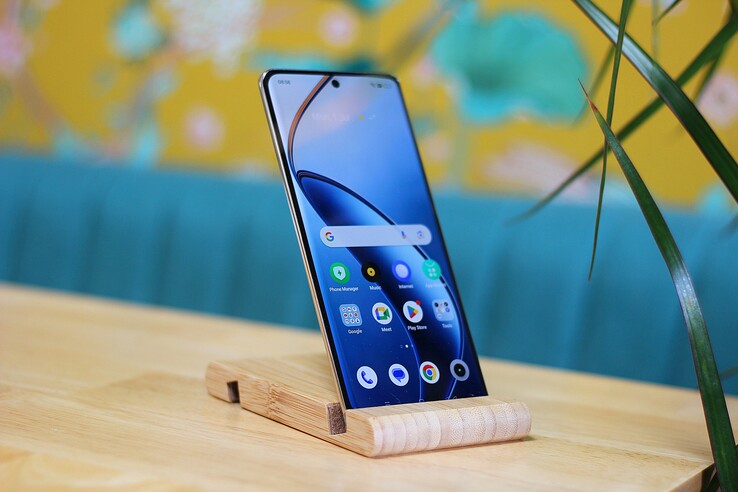
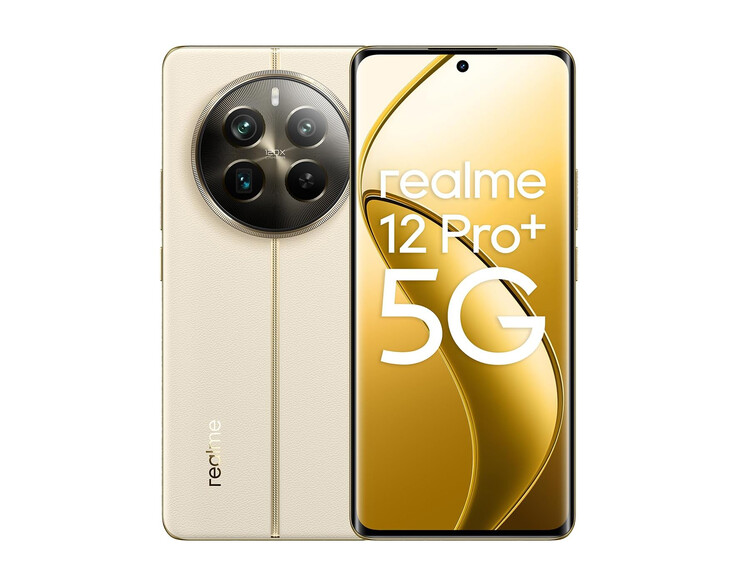











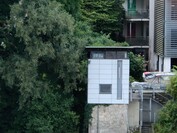

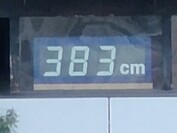





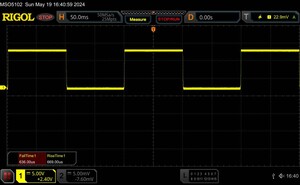
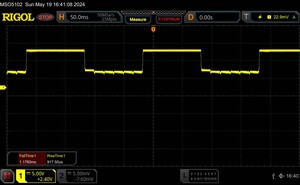






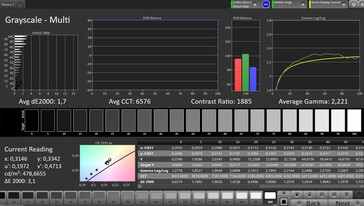


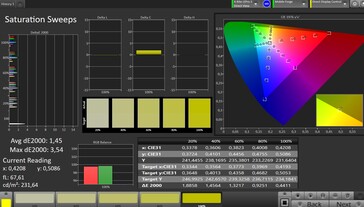

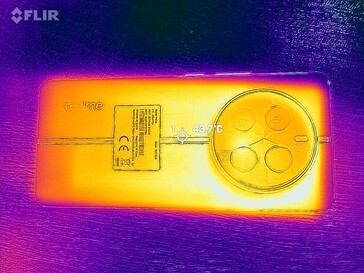

 Total Sustainability Score:
Total Sustainability Score: 
